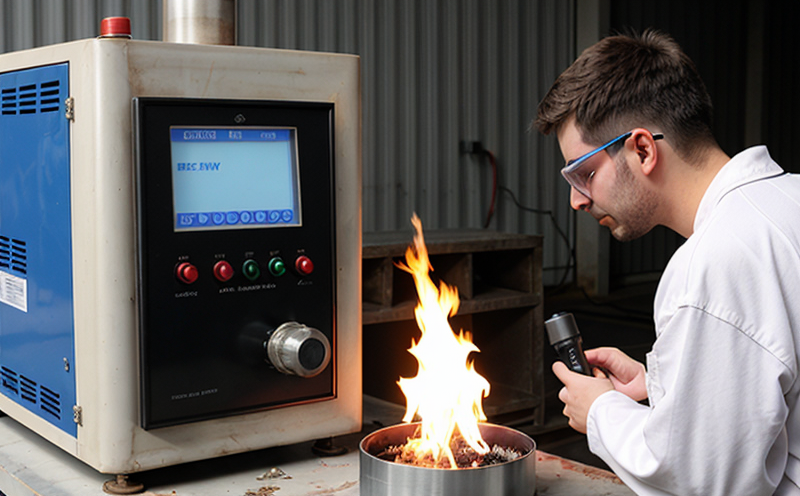EN 14511-4 Room Air Conditioner Thermal Test
The EN 14511 series of standards provides a comprehensive framework for testing and assessing the performance of air conditioning equipment. Specifically, EN 14511-4:2013 focuses on thermal tests conducted in rooms to evaluate the efficiency and functionality of room air conditioners (RACs). This test ensures that RACs meet stringent performance criteria under defined environmental conditions.
The standard is particularly important for manufacturers, quality managers, compliance officers, and R&D engineers who need to ensure their products comply with international standards. The test assesses various parameters such as cooling capacity, heating capacity, energy efficiency ratio (EER), and coefficient of performance (COP) under controlled room conditions.
The thermal test involves placing the air conditioner in a specially designed test chamber that simulates real-world operating environments. This setup allows for precise measurement of temperature changes and heat transfer rates. The test is critical for verifying compliance with energy efficiency regulations, which are increasingly stringent across many countries.
During the test, the RAC is subjected to specific conditions aimed at evaluating its performance under various thermal loads. These include setting the target temperature in the room, measuring the initial and final temperatures of the air inside the chamber, and monitoring the power consumption of the unit during operation. The data collected from these measurements are then used to calculate key performance indicators such as EER and COP.
The EN 14511-4 test is not just a compliance check; it also serves as a tool for R&D engineers to refine their designs and improve product efficiency. By ensuring that the equipment performs consistently across different environments, this standard helps manufacturers meet global market demands for energy-efficient products.
Compliance with EN 14511-4 is essential for HVAC equipment suppliers who want to enter or expand their presence in regulated markets. For procurement teams responsible for selecting and purchasing RACs, it guarantees that the units they choose are reliable and efficient, thereby contributing to both operational cost savings and environmental sustainability goals.
The test procedure outlined in EN 14511-4 is designed to be repeatable and reproducible, ensuring consistent results across different laboratories. This repeatability is crucial for manufacturers looking to standardize their testing procedures globally.
Industry Applications
The EN 14511-4 test finds application in various sectors including residential and commercial real estate, retail, hospitality, healthcare, and industrial facilities. In these industries, ensuring the optimal performance of RACs is paramount for maintaining comfortable indoor environments while adhering to energy efficiency standards.
For instance, in residential settings, the test helps homeowners choose air conditioners that not only cool their homes effectively but also consume less electricity. In commercial buildings, it supports facility managers in selecting units capable of handling large spaces efficiently and reducing operational costs. Retail establishments can benefit from RACs that maintain optimal temperatures for product storage and display while minimizing energy consumption.
In healthcare facilities, the test ensures that air conditioners provide a sterile and comfortable environment for patients and staff, which is critical for patient recovery and comfort. In industrial applications, it helps manufacturers maintain precise temperature control in production lines to ensure consistent quality of products.
Environmental and Sustainability Contributions
- Energy Efficiency: The EN 14511-4 test focuses on optimizing the energy efficiency of RACs, which directly contributes to reduced greenhouse gas emissions. By ensuring that air conditioners operate efficiently under various thermal loads, this standard plays a key role in promoting sustainable practices.
- Resource Conservation: Efficient RACs contribute to lower electricity consumption, thereby conserving non-renewable resources used in power generation.
- Emissions Reduction: By improving the efficiency of HVAC systems, EN 14511-4 helps reduce carbon footprints associated with air conditioning operations.
The standard’s emphasis on energy efficiency contributes to broader environmental goals and supports global efforts to combat climate change. This is particularly relevant in regions where air conditioning use is rapidly increasing due to rising temperatures and changing living conditions.
Use Cases and Application Examples
The EN 14511-4 test has diverse applications across various industries:
- Residential Use: Ensures that the RAC installed in a home is not only effective but also energy-efficient, helping to reduce monthly utility bills.
- Commercial Spaces: Guarantees that large office spaces or shopping malls have air conditioning systems capable of handling high occupancy and varying thermal loads efficiently.
- Hospitality: Validates that hotel rooms and lobbies are equipped with RACs that can provide a comfortable environment while minimizing energy costs.
- Healthcare Facilities: Ensures the optimal operation of air conditioning systems in hospitals, which is critical for maintaining sterile conditions.
R&D engineers use this test to refine their designs and improve product efficiency. For example, by identifying areas where cooling or heating can be optimized, they can develop more energy-efficient models that comply with international standards.
Compliance officers rely on EN 14511-4 to ensure that the RACs purchased meet specific performance criteria set forth in regulatory requirements. This helps them avoid potential penalties and ensures their companies remain compliant with global standards.





